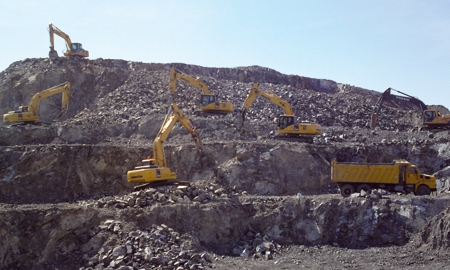Oman’s oil and gas sector has long served as the backbone of the nation’s economy, projected to contribute 81% to the national income this year and employing much of the population.
However, despite a resurge in oil production in the country recently and the hard work of the government in accommodating the needs of this now fast growing sector, the availability of oil and gas remains a challenge for the development of the industry. It is clear that diversification is needed if the country is to achieve its 2020 vision of boosting its capabilities and broadening its sources of income to reduce the country’s dependency on oil.
“Large industries have been a great contributor to national income, but such plants are highly automated and therefore can create only a limited amount of jobs,” said Minister of Commerce and Industry, Eng. Ali Masoud Al Sunaidy, noting the need for diversification.
Indeed, diversity is coming. In the immediate future lie plans to develop renewable energy projects to offset changes in gas supply and to open more opportunities for foreign investment. Companies like the Oman Oil Company (OOC) are employing new technologies gleaned from partners in the United States, enabling a bounce back of supply and a year-on-year increase in production levels.
Foreign investors are attracted by Oman’s competitive advantages: the country’s location, well-developed infrastructure, government incentives, political stability and natural resources.
Nevertheless, the limited availability of local workforce with the adequate skill sets and expertise are key challenges for new emergent sectors. It is in skills development and technological advancement that Oman wants to tap into international management and expertise. This mood echoes the sending of 50 Omanis overseas this year for expert training and qualification in the field of business, who will return to Oman to aid the development of the small to medium enterprise (SME) sector.
SMEs constitute a huge part of the trade institutions in Oman, more than 90% of the total number of companies and around 20% of the country’s gross domestic product (GDP). The government is largely to thank for this, having shown strong support for the development of the SME sector through funds like the SME Development Fund.
SMEs, along with the main manufacturing industries of food processing, building materials, fertilisers and heavy metals are key diversifiers of the Oman economy which will provide a future for Omani entrepreneurs and employment opportunities for Oman’s young and fast growing population. Indeed it is Oman’s young population and the country’s industrial development which hold great potential for creating jobs for Omani nationals towards 2020.
Over the past 10 years, industry in Oman has grown at a rate of 16% while the contribution of industrial and commercial activities has reached 10.3%. While the country has concentrated on heavy industry in a series of ports with attached industrial centres and free zones such as Sohar and Salalah ports, Oman also has eight industrial estates designed to ensure balanced growth across the country. These estates are mainly geared around light and consumer industries, while further industrial estates are already planned.
However the availability of gas remains a potential obstacle for industrial development. While Oman has signed a number of LNG supply contracts, there is a limited amount of gas left over for industrial users, meaning the authorities have to be very selective when it comes to allocating gas.

0 COMMENTS